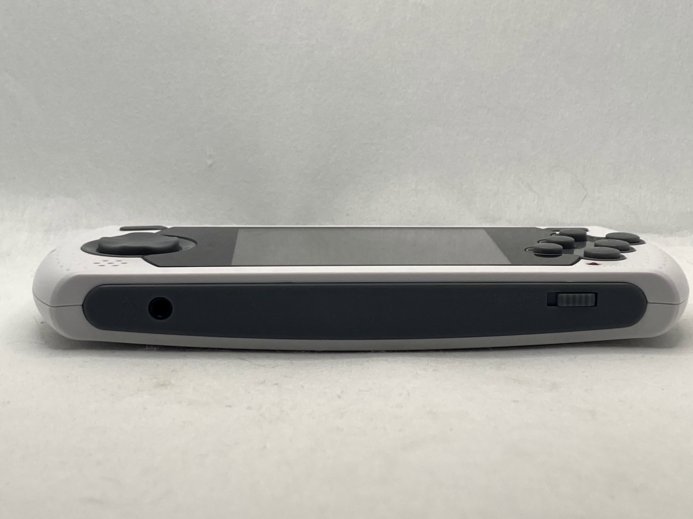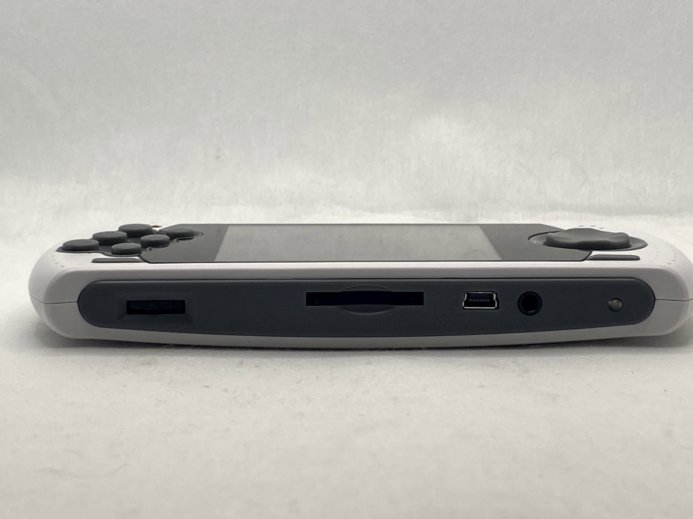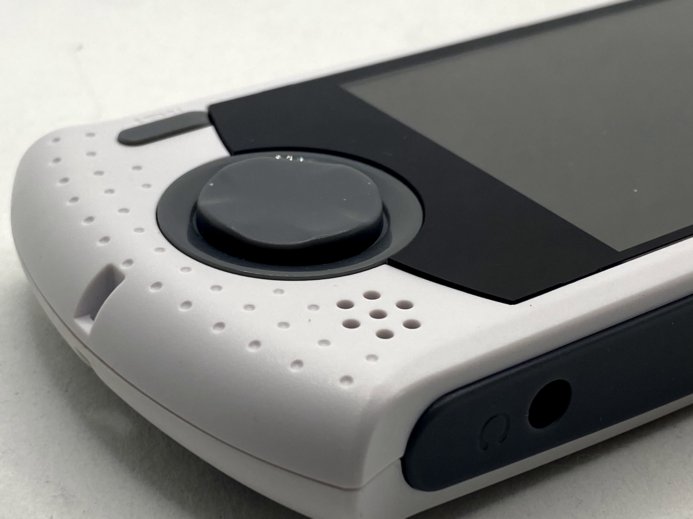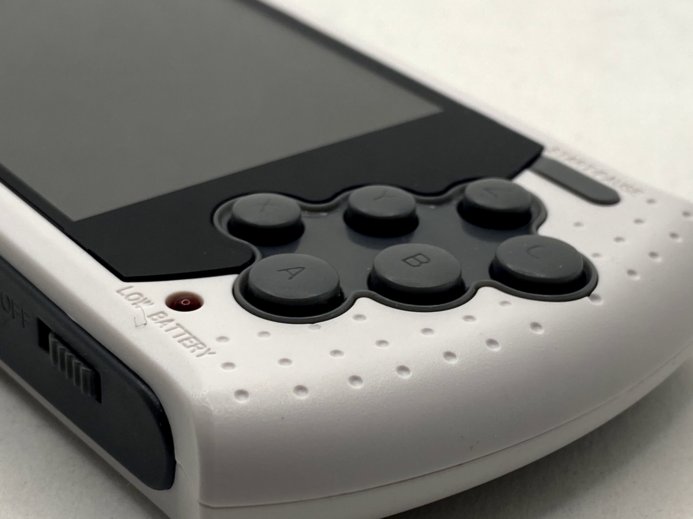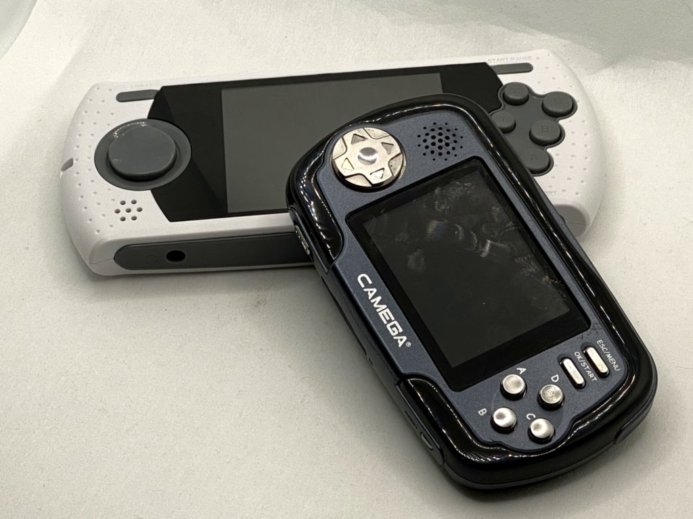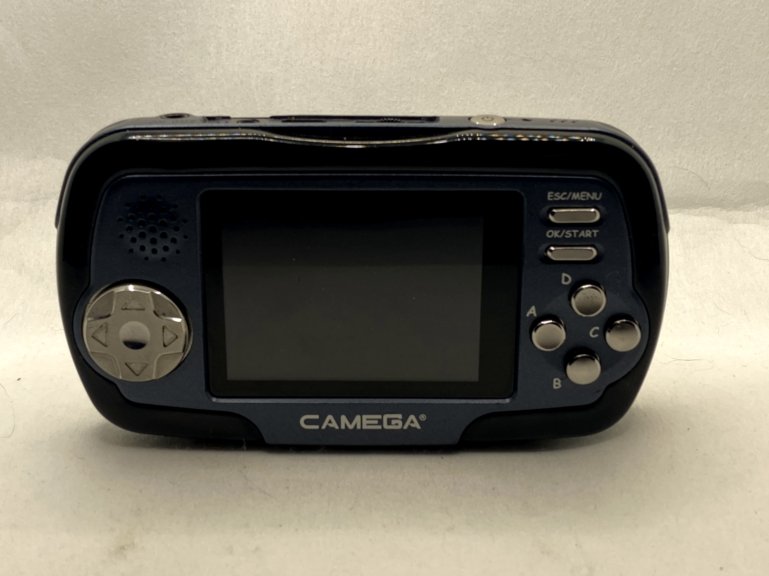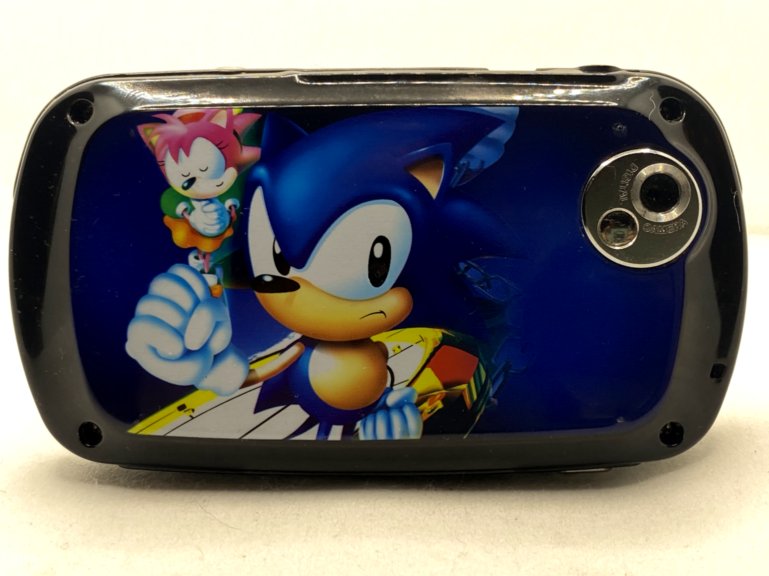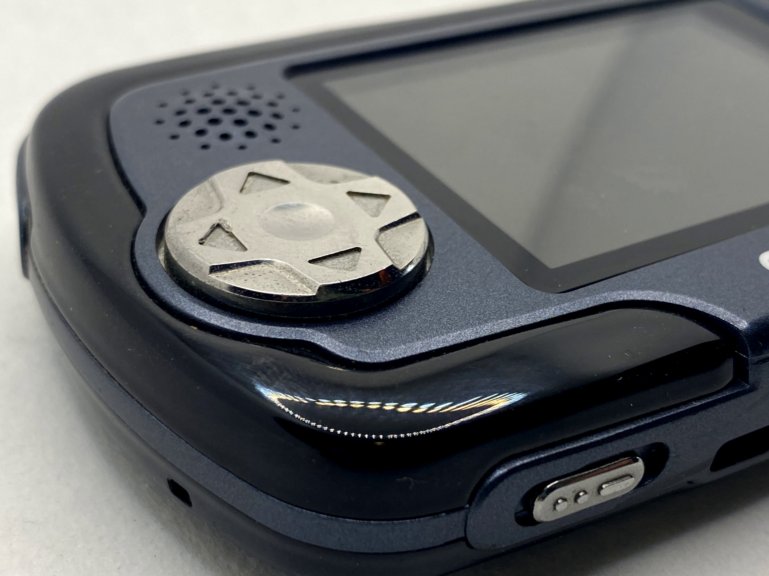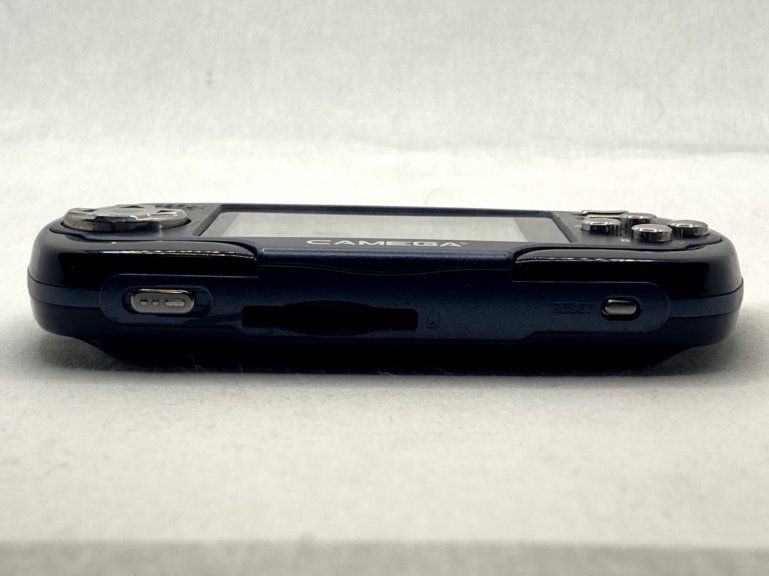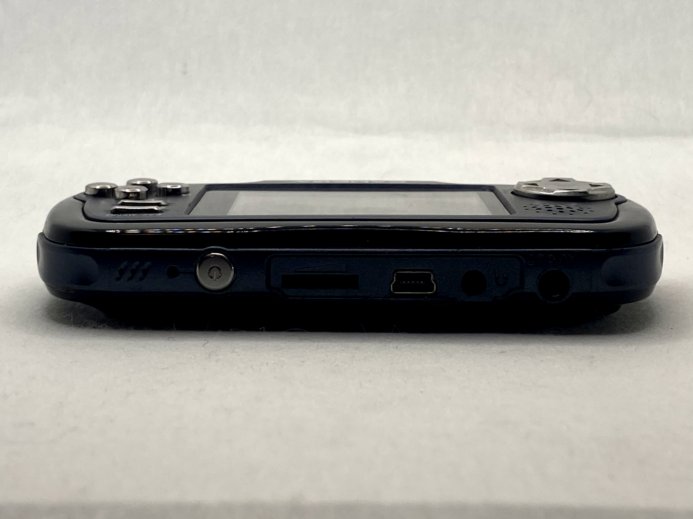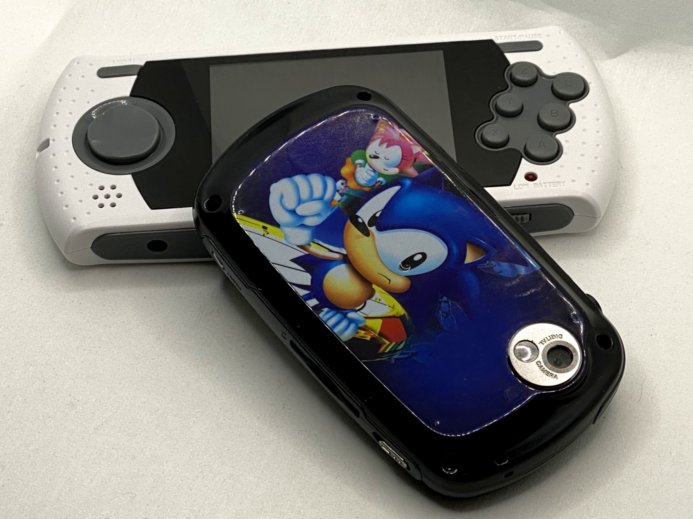A History of the Portable Mega Drive
February 14, 2021The Sega Genesis (known as the Mega Drive everywhere but in North America) has a weird history when it comes to handheld gaming that includes commercial airplanes, an amazing portable, and a flood of kind of terrible, officially licensed gaming jetsam.
It all started in 1993, five years after the launch of the Genesis, with the Mega Jet.
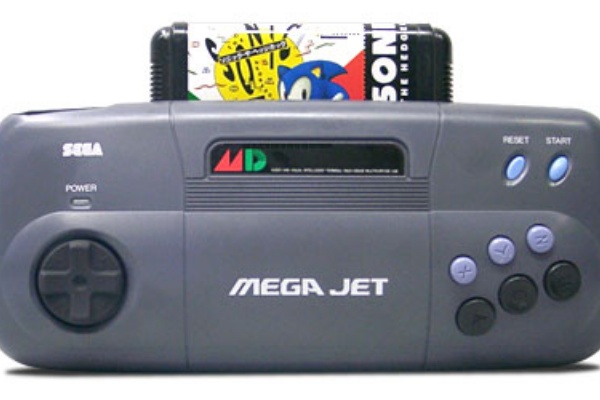
The Sega Mega Jet was essentially a miniaturized version of the Mega Drive that was designed to be rented out on Japan Airlines Flights. The device used the system’s traditional cartridges, an AC adapter, and was designed to be connected to the armrest monitor used on planes. The screen-less handheld included a directional pad and six buttons. There was also the ability to connect a second controller via a cable.
A year later, Sega released a consumer version of the device in Japan, designed to be connected to a home television.

Eventually, Sega went on to use the basic design of the Jet as the framework for its Sega Nomad, which hit the U.S. in 1995. The Nomad has a backlit screen, runs on six AA batteries, and supports the entire Genesis library.
While the Genesis games have lived on in myriad forms across numerous gaming platforms, the handheld incarnations of the games have been the most bizarre. Much of that strangeness can be traced back to a 2005 licensing deal that Chinese company ATGames Holdings, Ltd signed with Sega in 2005.
ATGames was founded in 2001 and quickly created distribution channels in the U.S., Japan, China, Asia, and Latin America.
Under the licensing deal, announced in January 2005, Sega granted ATGames the exclusive rights to distribute a broad range of Sega games, products, and downloads. Initially, the deal was only for mainland China, Taiwan, and Hong Kong, but over time it expanded.
ATGames have released a number of Mega Drive handhelds over the years, but I want to focus on the two I own: The Arcade Ultimate and the bizarre Mega Drive Camega.
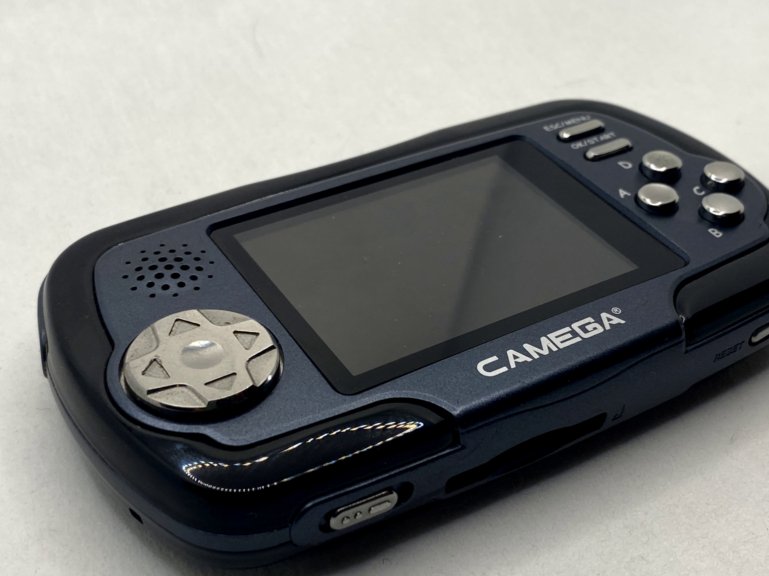
I’ve had a bit of trouble tracking down many details about the Camega, including its initial release date. I did find that ATGames registered the trademark for Camega in 2010, and it appears it was available in France that same year. So let’s go with 2010.
First the name: Camega is a portmanteau of the words CAMEra and GAme. I know, just terrible. The device itself is about the size of a late ‘90s cellphone. It’s got a rectangular shape with rounded corners. The front features a 2-¼-inch screen framed by a tiny speaker and directional pad on the left and esc/menu, ok/start, four round face buttons on the right. The top edge includes A/V out and headphone ports, charger, volume dial, power button, and microphone. The bottom edge has a game/media toggle, SD card slot, and reset button. The back of the device features a camera lens and a big picture of Sonic and Amy Rose. I’m not entirely convinced that this is official art. It looks a bit like fan art.
The toggle switch on the bottom of the device switches between the built-in Mega Drive games and the system’s other features which include an MP3 player, ebook reader, picture and video player, camera, audio recorder, and file explorer (I presume this is where you might access ROMs you’ve loaded using an SD card.)
Sliding that switch on the bottom reboots the system into Mega Drive mode which, for the system I have, opens a three-page menu of 15 games. The system includes:
- Alex Kidd in the Enchanted Castle
- Alien Storm
- Altered Beast
- Columns
- Crack Down
- Columns III
- Fatal Labyrinth
- Flicky
- Decap Attack
- Ecco the Dolphin
- Gain Ground
- Shadow Dancer: The Secret of Shinobi
- Golden Axe
- Sonic the Hedgehog
- Sonic the Hedgehog 2
The games included with the system are all built into the Camega’s single integrated circuit. The games themselves are fine for casual play, but are sure to make any fan of these on the original cringe. Playing on the system isn’t much better thanks to a very springy D-pad and pretty mushy face buttons. The system itself also feels almost hollow in the hands, and fairly cheap with its plastic construction.
Overall, Camega is a strange little device designed for a specific moment in time that landed before the rise of the smartphone, but after solid handhelds entered the market to prove gaming on the go could be a fun experience.

The Arcade Ultimate, which came out about a year later from ATGames, has a much better handfeel.
The system was released under a seemingly endless number of different names including the Sega Mega Drive Arcade Ultimate Portable, Sega Genesis Arcade Ultimate Portable, Sega Genesis Firecore Portable Player, MD Play, and – my personal favorite – the Gopher.
The variety of names included a variety of versions for the system, with different included games and at least one that supports wireless controllers.
The Ultimate features a larger, brighter, more vibrant 3-inch backlit LCD screen framed by a menu button and directional pad on the left, and a start/pause button and cluster of six buttons on the right. An LED in the bottom right corner lights up when the system’s battery level is low. The top edge features a power light, an A/V and power port, SD card slot, and volume dial. The bottom edge has a headphone port and power switch. Thankfully, there is no fan art on the back of the system.
The design is rectangular with slightly wider, curved edges which makes holding the system while you play a bit more comfortable.
Games on the system are listed across nine pages, seemingly broken down into three categories. The first grouping is of 40 official games. The second seems to be a mix of 40 bizarre in-house developed games, and the final page shows what you have loaded onto your SD card. A scrolling text at the bottom reminds players that they can download more “classics” on the ATGames website.
Here’s the official titles you get on the 80-game version of the system:
- Alex Kidd and the Enchanted Castle
- Alien Storm
- Altered Beast
- Arrow Flash
- Bonanza Bros
- Chakan: The Forever Man
- Columns
- Columns III
- Comix Zone
- Crack Down
- Decap Attack
- Ecco the Dolphin
- Ecco Jr.
- Ecco 2: The Tides of Time
- E-Swat: City Under Siege
- Eternal Champions
- Fatal Labyrinth
- Flicky
- Gain Ground
- Golden Axe
- Golden Axe II
- Golden Axe III
- Jewel Master
- Kid Chameleon
- Dr. Robotnik’s Mean Bean Machine
- Mega Man: The Wily Wars
- Shadow Dancer: The Secret of Shinobi
- Shinobi III
- Sonic & Knuckles
- Sonic Spinball
- Sonic the Hedgehog
- Sonic the Hedgehog 2
- Street Fighter II’: Special Champion Edition
- Super Street Fighter II: The New Challengers
- Streets of Rage
- Streets of Rage 2
- Streets of Rage 3
- The Ooze
- Vectorman
- Vectorman 2
And here are the ATGames created “games” included on the system:
- Air Hockey
- Black Sheep
- Bomber
- Bottle Taps Race
- Brain Switch
- Bulls and Cows
- Cannon
- Checker
- Chess
- Color Puzzle
- Cross the Road
- Curling 2010
- Dominant Color
- Fight or Lose
- Firefly Glow
- Fish Story
- Flash Memory
- Formula Challenge
- Hexagonos
- Jack’s Pea
- Jewel Magic
- Logic Dial
- Mahjong Solitaire
- Match Eleven
- Mega Brain Switch
- Memory
- Memory Match
- Mirror Mirror
- Mr. Balls
- Naval Power
- Panic Lift
- Reaction Match
- Snake
- Space Hunter
- Spider
- Sudoku Quiz
- Table Magic
- Treasure Hunt
- Warehouse Keeper
- Whack A Wolf
While playing on the Ultimate is much more comfortable (and easier to see) than gameplay on the Camega, the graphics and the sounds still leave a lot to be desired.
The reality is, though, that these early ATGames creations all pale in comparison to the original titles, and not simply because of screens and speakers used. It’s unclear if these are running copies of the games or just under-powered emulations. The sound of the games is the most striking difference, producing seemingly off-key results thanks to the difficulty nearly everyone has in matching the music created by the Genesis’ original chipset.
As a handheld collector, I love these sort of twisted, officially sanctioned creations, but as a fan of Sega, chances are you’ll hate them.
Love retro handhelds? Well then, have I got a bunch of stories, videos, and pictures for you.
